(blog originally writen 21 June 2012... I was late posting it... oops!)
Yesterday, 20 June 2012, was the Summer Solstice of the Northern Hemispere. The day of the Summer Solstice is the day of the year during which the sun is in the sky for the longest period of time. Since before the beginning of the Christian faith, the Summer Solstice has been celebrated as a sacred day in countries around the globe. Many equate the day with fertility and the festivals, traditions, and rituals associated with the Solstice are celebrations dedicated to goddesses and gods of fertility (though masculine fertility dieties are rare) and to the pursuit of health, discernment, and good fortune. Festivities can last for several days. The celebration of the Summer Solstice is often referred to in English-speaking countries as Midsummer Day and Midsummer Eve. Traditionally, Midsummer is celebrated either on the 21st of June or on the 24th of June (the day the Solstice occurred on during the time of ancient Rome), even when the actual Summer Solstice (the longest day of the year) did not occur on one of those days, as was the case this year. The ways in which Midsummer is/was celebrated vary widely amongst different cultures and the festivals of the day have various names, usually derived from the name of the fertility diety to which the festival is dedicated.
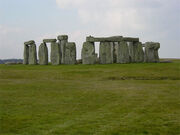
Stonehenge
Stonehenge, located in England in the county of Wiltshire, is a prehistoric monument which many believe to have been built to serve a spiritual function. According to classical Arthurian folklore, Merlin was responsible for the construction of Stonehenge. Stonehenge was a burial ground for cremated individuals and may have been built as a ritualistic place of healing. The stones of the structure are placed so that observationas of astronomy may be made and predictions may be casts in respect to the coming of eclipses, the solstices, the equinoxes, and other celestial events with religious significance. One stone of the monument, referred to as either the Heelstone (also spelled: Heel Stone), the Friar's Heel, or the Sun-Stone, is set apart from the stone circle near the main enterance, leaning towards the circle. During the Summer Solstice, if you stand in the center of Stonehenge's circle, facing the Sun-Stone, you will see the sun rise just above the Sun-Stone. "The circular bank and ditch, double circle of ‘bluestones’ (spotted dolerite), and circle of sarsen stones (some with white lintels), are concentric, and the main axis is aligned on the midsummer sunrise–an orientation that was probably for ritual rather than scientific purposes. Four
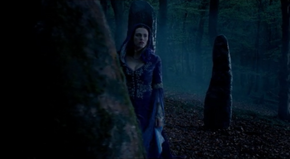
Morgana in a Stonehenge-like location.
“station stones” within the monument form a rectangle whose shorter side also points in the direction of the midsummer sunrise." (Source 4) We will never know what the true purpose of Stonehenge was, but it is clear that those who built it had some reasons for focusing much of its design on drawing attention to the Midsummer sun and correlating with the Summer Solstice. In Merlin (BBC), a similar monument can be seen in the episode The Castle of Fyrien, about 12 minutes into the episode when Morgana goes to meet Morgause in the woods.
The Druids (not those of the show, though perhaps they would as well) referred to the Summer Solstice as Alban Heruin, which meant "Light of the Shore." They celebrated this sacred time, which occurs between the Spring Equinox (Alban Eiler, meaing "Light of the Earth") and the Fall Equinox
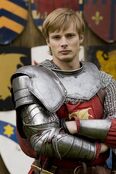

(Alban Elfred, meaning "Light of the Water"), by enacting a ritual in which the Oak King, the god of the waxing year (the first half of a year) is symbolically defeated by the Holly King, god of the waning year (the second half of a year). This ritual represented the defeat of the light by the darkness, as after the Alban Heruin the days would gradually get shorter (and the nights longer) until the Winter Solstice, Alban Arthuan, meaning "Light of Arthur," after which the days would again lengthen. Many believe that the King Arthur of the Arthurian Legends is connected to Alban Arthuan.
Midsummer Eve (the evening and night preceding Midsummer Day) was believed to be a very magical time (and many still hold this belief, including myself). It was believed that on this evening plants (ie: the Calendula, St. John's Wort, the mythical Fern Flower, etc.) with miraculous powers, typically related to healing, would bloom and should be picked on that night. Young maidens, wearing garlands on their heads, would enter the forest first, while singing, to search for these blossoms. Then, the young men would join them in the search. This tradition encouraged and fostered romantic encounters and some of the men
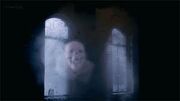
Dorocha
would exit the forest wearing their newly-betrothed's garland, signifying their engagement. Evil spirits were also said to haunt the world on that night and bonfires were lit to protect against these spirits. In the TV show, Merlin, the Dorocha are similar to the evil spirits which are said to roam freely on Midsummer Eve and to be banished with fire. Midsummer Eve was also rumoured to be a time during which witches held meetings with other beings of power, or creatures of magic. Another tradition associated with Midsummer
Kalgharrah, the Great Dragon from BBC's Merlin
Eve was that of boys collecting and burning bones and rubbish in order for the fire and the smoke in the air to drive out dragons, which supposedly would poison wells and springs. BBC's Merlin has two dragons, Kalgharrah and Aithusa, but it does not appear that the dragons of the show can cause the desvastation associated with the dragons driven out by the ritual of bone-burning on Midsummer Eve. Rather, those dragons are more akin to the creature from the Merlin
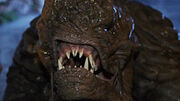
Afanc
episode The Mark of Nimueh, the Afanc, a creature of magic made from earth and water that poisoned the water supply of Camelot and was defeated by combining fire and air. The bonfires of Midsummer Eve, other than being used to repel dragons and evil spirits, also played a large part in the festivities and the celebration of fertility. To test courage and physical health, characteristics often believed to gain favor from fertility goddesses and to be qualities found in suitable life-partners, young men and women would jump over a bonfire, avoiding the flames. Young couples would clasp hands and jump over a bondfire together. If the couple's hands came unclasped, it was predicted that they would not have a future together. However, if their hands remained clasped, it meant that they would be happy together and would ensure fertility for the couple.
When Christianity entered the world, the rituals of the Summer Solstice changed. Like many other pagan traditions, some Midsummer practices were adopted by the new religion to use on St. John's Eve, or the Feast Day of St. John the Baptist, and modified to fit the beliefs and teachings of the new religion. One of these tradions was the dragon-repellant burning of bones, documented by a 13th-century monk in Winchcomb, Gloucestershire, though this ritual later fell out of practice. Although some Christian missionaries, like the 13th-century monk perviously mentioned, used pagan traditions to celebrate
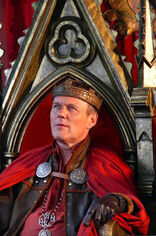

Christian holidays, believing that converts would be more likely to follow Christian teaching if allowed to hold on to their cultural traditions and customary celebrations, many preached that the Old Ways should be abandoned completely. "In the 7th century, Saint Eligius (died 659/60) warned the recently converted inhabitants of Flanders against the age-old pagan solstice celebrations. According to the 'Vita' by his companion Ouen, he said: 'No Christian on the feast of Saint John or the solemnity of

any other saint performs 'solestitia' (summer solstice rites) or dancing or leaping or diabolical chants.' " (Source 2) Similarly, in the TV show Merlin, Uther equated traditions of the Old Religion with "diabilical" practices and judged harshly against those who held on to the Old Ways. In history, the Christian church eventually held crusades and witch-hunts against those who either refused to abandon their traditional religion and be converted to the new religion or were suspected of clinging to the old pagan traditions (the ones the Christian church hadn't adopted). Witch-finders, like Aredian, and individuals like the bounty hunter Halig were very common for a time, particularly during the Medieval times. (Look for more information on the topic of Witch Hunts in a blog at a later date! I WILL get around to writing it! Promise!)
Sources:
1)
2)
3)
4)
5)
6) my own experiences and prior knowledge
So, what do you guys think? Do you know of any more traditions related to the Summer Solstice? If so, I'd love to hear about them! Can you think of any other connection the show has to these Midsummer traditions, rituals, and festivities? Did I forget any connections? Do you agree or disagree with anything I've said here? Did you find the topic of this blog interesting or painfully dull? Is the blog entry well written or is it a pile of troll food in prosetic form? Would you want to read more blog posts like this, connecting real world history, religion, classical Arthurian folklore, and the TV show Merlin, or would you rather shoot yourself in the foot with an arrow (or shoot me in the face with a hex) than read another blog like this? Please, drop a line and let me know what you think!
Possible Furture Blog Topics:[]
- - Witch Hunts: Through the Ages and In the Show
- Teaser Images:


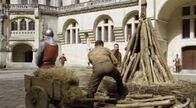
- - Mind Control and Possession in Merlin: Who and what can possess/control the mind and body? Where does this ability derive from in the universe of the show? and How does this all relate to the real world?
- Teaser Images:
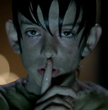


- - The Arthur/Merlin Bromance: An Analysis of Their Relationship and Its Parameters (Is it brotherly, boss/employee, homo-erotic, or what?)
- Teaser Images:



- - Funny Fans Are Funny: A blog filled with videos of Merlin fans, video by Merlin fan, pictures of Merlin fans, and pictures by Merlin fans (All with witty -or not so witty- commentary by yours truly, me WorshipperOfTheOldReligion, AKA: Sybil)
- Teaser Images:

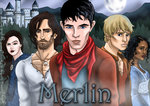

Which would you prefer I cover next?

